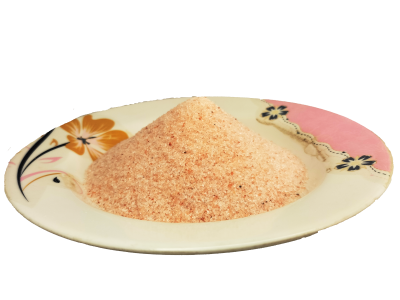
edible salt formula
Salt, chemically known as sodium chloride (NaCl), is one of the most essential and widely used substances in the world. Not only does it add flavor to food, but it’s also crucial for human health and various industrial applications. Salt has many forms and formulations, from table salt and sea salt to specialty salts like Himalayan pink salt and iodized salt. Each type of salt has unique properties, uses, and nutritional values. This article provides an in-depth look into the composition and formulas of edible salts, their benefits, and how they are used in different culinary and health contexts.
Algohar World natural salt lamps that are believed to provide various benefits, combining both the aesthetic appeal and the potential health advantages associated with Himalayan salt lamps.
The Basic Chemical Formula of Salt
The fundamental formula for edible salt is **NaCl** (sodium chloride). Sodium chloride is an ionic compound composed of one sodium (Na) ion and one chloride (Cl) ion, held together by ionic bonds. Sodium chloride is found naturally in seawater, rock formations, and salt deposits.
Key Components:
Sodium (Na)
Sodium is a vital mineral that regulates fluid balance, muscle contraction, and nerve function in the human body.
Chloride (Cl)
Chloride is also essential, playing a role in maintaining pH balance, aiding digestion, and supporting cellular function.
Types of Edible Salt and Their Composition
Different types of salt are available for consumption, each with unique characteristics, mineral content, and production methods. Here are some common edible salt varieties:
Table Salt
Formula
NaCl + Anti-caking agents (like calcium silicate).
Composition
Table salt is usually 97-99% sodium chloride. It is often fortified with iodine, an essential nutrient, to prevent iodine deficiency.
Production
Table salt is mined from salt deposits and heavily processed to remove impurities, resulting in small, consistent crystals.
Uses
It’s commonly used in cooking, baking, and food preservation due to its fine granules that dissolve quickly.
Sea Salt
Formula
NaCl + Trace minerals (like magnesium, calcium, potassium).
Composition
Sea salt is mostly sodium chloride (typically 85-98%) but contains small amounts of minerals and trace elements due to its extraction process.
Production
Sea salt is harvested from evaporated seawater and is usually less processed than table salt, leaving trace minerals intact.
Uses
Sea salt is popular in cooking and as a finishing salt, valued for its texture and subtle flavor variations depending on the origin.
Himalayan Pink Salt
Formula
NaCl + Trace minerals (primarily iron oxide, magnesium, calcium).
Composition
Himalayan pink salt is around 95-98% sodium chloride, with the remaining percentage composed of over 80 trace minerals.
Note: edible salt formula vary widely in composition, taste, texture, and health benefits. Understanding the types of salts, their production methods, can help you make informed choices in the kitchen
Production
Mined from salt deposits in the Punjab region of Pakistan, this salt is minimally processed and naturally rich in minerals.
Uses
Known for its distinctive pink color and mineral content, it’s used in cooking, decorative salt lamps, and salt therapy.
Kosher Salt
Formula
NaCl (without additives).
Composition
Kosher salt is nearly pure sodium chloride and typically lacks additives and anti-caking agents.
Production
Kosher salt is mined and evaporated, resulting in large, flaky crystals that dissolve slowly.
Uses
Kosher salt is commonly used in koshering meat and cooking, particularly due to its large grain size that allows for even seasoning.
Iodized Salt
Formula
NaCl + Potassium iodide (KI) or sodium iodide (NaI).
Composition
Iodized salt contains 97-99% sodium chloride with added iodine compounds to prevent iodine deficiency.
Production
Iodized salt is typically table salt that has been fortified with iodine, often in the form of potassium iodide.
Uses
Essential in regions where iodine deficiency is prevalent, it’s used in everyday cooking to maintain proper iodine intake.
Production Processes of Edible Salt
The method of production impacts the texture, mineral content, and flavor of different salts. Here’s an overview of the production processes for various types of edible salt:
Mining and Refining (Table Salt and Rock Salt)
Salt is extracted from underground deposits through mining and then refined to remove impurities. The salt is ground to a fine consistency, often with anti-caking agents to prevent clumping.
Conclusion
Edible salt formulas vary widely in composition, taste, texture, and health benefits. Understanding the types of salts, their production methods, and mineral content can help you make informed choices in the kitchen and support your overall health. From the iodine in table salt to the trace minerals in Himalayan pink salt, each salt type has unique advantages and applications. Moderation is key, and choosing the right salt for the right purpose can enhance both flavor and well-being.





Leave Your Comment